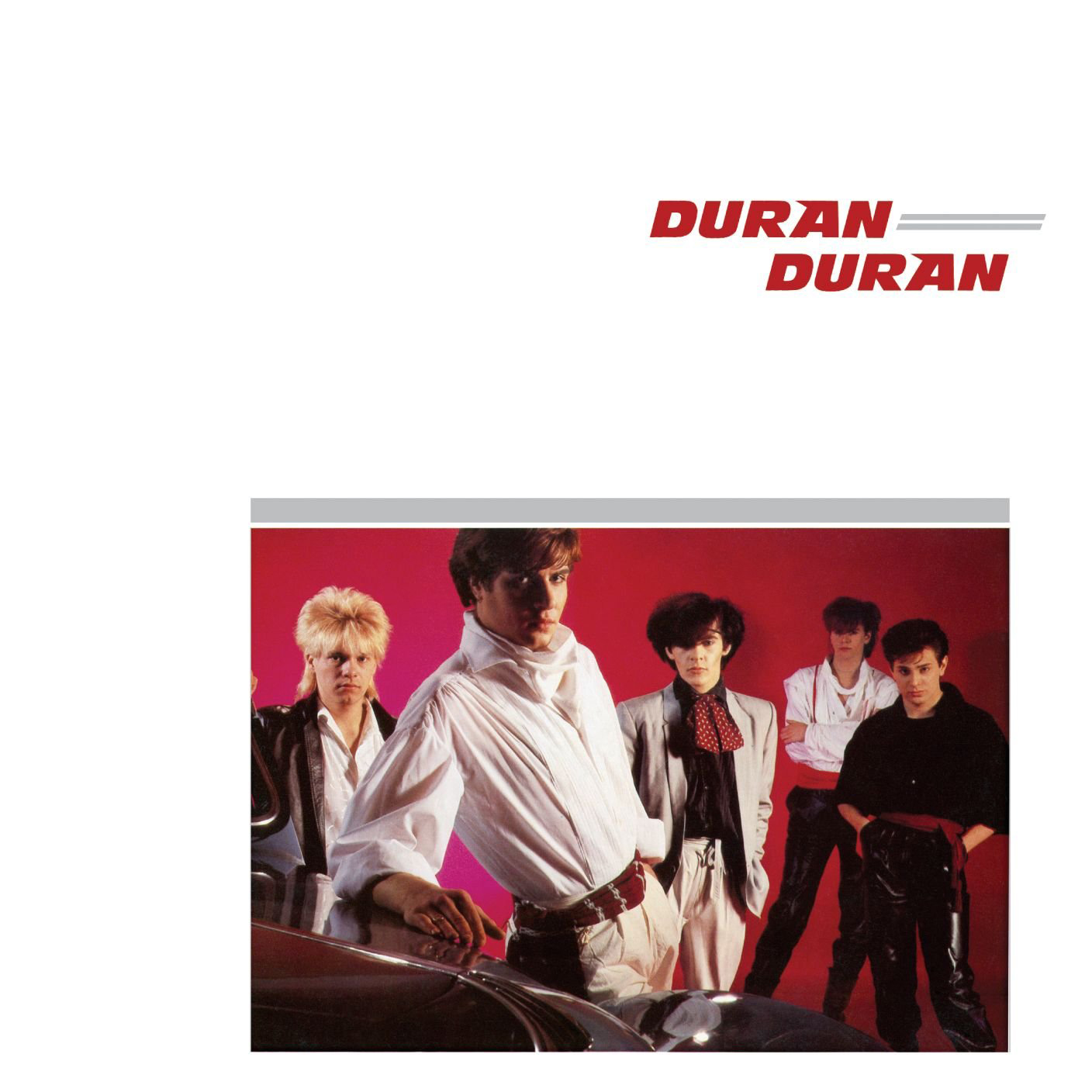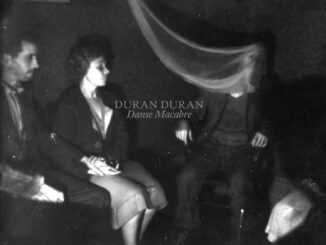
This week sees the 40th anniversary of Duran Duran’s self-titled debut album. XS Noize looks back on this momentous release from a band that would become the ‘Fab Five’ of the ‘80s.
It was December 1980; the UK was in turmoil, unemployment was rocketing, John Lennon had been murdered in America, and with the Cold War raging, the threat of an all-out nuclear war seemed a realistic possibility for many people. Amidst this maelstrom, in an interview with Betty Page for Sounds Magazine, lead singer Simon Le Bon declared, “We want to be the band to dance to when the bomb drops!” Duran Duran were beginning to fuse a cocktail of funk, disco groove and rock into something that millions would indeed be dancing to very soon.
One guy from Pinner, north London (Le Bon), a seasoned guitarist from the north-east – Andy Taylor and three lads from the midlands – Nick Rhodes (synths), John Taylor (bass) and Roger Taylor (drums) had been blazing a trail in the local scene for a couple of years from their base, The Rum Runner nightclub in Birmingham. Le Bon only joined the band as the singer midway through 1980 after a series of vocalists had come and gone in the band. But, by December 1980, this group were ready to explode onto the scene. The music landscape was coming out of the punk era, with new wave and the rise of synthesizers, blended with rock, playing a more prominent role. The tide was turning away from hard-edged, vociferous guitar-based bands. Duran Duran were about to catch their very own tidal wave.
EMI decided for ‘Planet Earth’ to be the lead single. It was released in February 1981 and reached Number 12 in the UK charts. It is by no means the best song on the album. For what it lacks in-depth, it makes up for in gloss. However, it was undoubtedly something new. The band themselves knew that this would not be the biggest hit on the album. As Andy Taylor recalls in his book, ‘Wild Boy: My Life in Duran Duran’, “’ Girls on Film’ was always going to be a bigger hit, but the plan was not to release it until we’d established a bit of profile for ourselves.” Recorded at Red Bus studios on Edgware Road, London, ‘Planet Earth’ had this new breed of what people called ‘New Romanticism’ all over the song and in the accompanying video with the band’s carefully chosen aesthetics. The MTV era was just around the corner, and Duran Duran would be central to that medium. The track itself is post-punk pop with an air of mystery and ambiguity around it, something that would define many of Le Bon’s lyrics for years to come.
The band’s debut single would also be an important milestone in developing the stylised artwork for the quintet. For ‘Planet Earth’, EMI brought Malcolm Garrett to deliver the sleeve artwork for the single and imminent album release. XS Noize caught up recently with the legendary artist, now MBE, providing a fantastic insight into the genesis of the visuals.
“Beyond a general discussion with Rob Warr (EMI label manager) that this was a band that had a fresh vision, I was effectively given free rein initially. They were one of a few bands calling themselves ‘New Romantic’ in what was already a post-punk world. I can’t actually recall that there was a brief as such. Knowing my work with bands such as Buzzcocks and Magazine, he just left me to get on with it. The name had been taken from a character called Durand Durand in the futuristic science fiction film ‘Barbarella’ starring Jane Fonda. I was a fan of this film myself, and it naturally gave me a bit of further insight into what the band were about.”
Garrett goes onto recall – “Their name and the title of the song, ‘Planet Earth’, suggested to me the kind of graphics that an airline identity might have in the 60s – a contemporary, almost space-age look. I was leaning towards clean modernism, far away from the punk DIY imagery that was already looking tired. I also had in mind that I could develop a graphic system that would give consistency to subsequent releases. This gave me a controlled graphic environment to work within, almost corporate in definition, but always luscious rather than conservative.”
In terms of the album cover and sleeve itself, Garrett explains, “I’m not sure who chose the specific Fin Costello photo for the first album cover, but I ensured it followed the clean lines and modernist aesthetic that were maintained throughout the whole campaign surrounding the album. The chrome foil accenting the band logo and main images front and back emphasised a blend of glamour and futurism. The photos I used on the inner sleeve were taken from actual 16mm film frames from the promo shot by i-D Magazine’s Perry Haines and Terry Jones for the second single, ‘Careless Memories’. I was always concerned with ensuring the visual links between the printed graphics with the new medium of video.”
In his memoir, ‘In the Pleasure Groove’, John Taylor confirmed that this particular Duran logo by Garrett remains his all-time favourite – “It was classy. It said we are the new breed.”
‘Careless Memories’ was released in April 1981. Commercially, it was a setback, only reaching Number 37. However, there is tremendous energy & angst in the track, and it has remained a staple part of Duran’s live performances spanning four decades. This song was one of three sets of lyrics that Le Bon brought to the table when he originally auditioned with the band.
This album also saw the continued rise of Colin Thurston as a producer in his own right. As well as producing the likes of Bow Wow Wow, Human League & Magazine, Thurston had previously engineered on the Bowie / Iggy Pop Berlin sessions that resulted in ‘The Idiot’ & ‘Lust for Life.’ As described by drummer Roger Taylor, Thurston’s “dirty” drum sound was inspired by Colin’s work with Bowie. This is evident on several tracks, but no more so in the opening anthem – ‘Girls on Film’; a song that will equally be remembered for its risqué Godley & Crème video as much for its killer hooks and melodies.
This was the third and final single released from the album, giving the band their first top-ten hit, plateauing at Number 5 in the UK in July 1981, just a month after the LP’s release. Rhodes’s synthesised mimicking of a camera shutter to introduce the song, punctuated by Roger and Andy Taylor’s drumming and guitar, have become iconic.
If ‘Girls on Film’ is a tongue-in-cheek, raunchy exploration of the glitz & glamour modelling industry, the band also had a depth and darkness to them – something that separated them from their so-called contemporaries around from that time, who were never able to sustain the longevity of Duran Duran. ‘Anyone Out There’ is a case in point. Never released as a single and rarely played by the band live, this one of the most underrated tracks on the album and across their back catalogue as a whole. It contains elements of regret, yearning and isolation – “I tried to sleep last night, but I’ve caught you dreaming, about days we used to wonder away.” Andy Taylor’s lead guitar sets the scene, whereas John Taylor’s pulsing bass throughout and notably in the outro is sublime.
An eerie ‘To the Shore’ completes the first half of the LP with its stark vocals, backed up with a strong rhythm section. Unfortunately, it is admittedly one of the weaker songs on the release.
‘Night Boat’ kicks off side two with a cinematic intro by Rhodes and the Taylors, building the tension before Le Bon makes his entrance. The video for the song has a horror movie feel, complete with a squad of aquatic zombies, naturally. Roger Taylor’s tribal drumbeat fits perfectly with the bizarre and macabre scene.
‘Sound of Thunder’ melds the powerful, individual elements of the band into those instantly recognisable Duran sonics. There is a frenetic, fast-paced excitement to this song. As Le Bon sings, “That’s what I was made for / the world spins so fast that I might fly off” as if he knew what they were on the cusp of and the crazy ride that was on the horizon.
The hidden gem on the LP is ‘Friends of Mine.’ It may be the first and last time that Duran Duran have been political on any of their records. The line “Georgie Davis is coming out” was inspired by local street graffiti in the mid-’70s in anticipation of the release of Davis from prison in 1976. He had previously been wrongly convicted for robbery. Thurston’s innovative production & engineering techniques really accentuate the drumming, bass and lead guitars on this often overlooked Duran track.
The instrumental, middle-eastern influenced ‘Tel Aviv’ with a blend of Rhodes’s synths, and Andy Taylor’s guitar licks brings Duran Duran’s debut offering to a mystical close.
The album would eventually top out at Number three in the UK charts and Number ten in the U.S., following a re-issue in 1983. Duran Duran’s virgin album propelled the band onto the edge of the limelight in the summer of 1981, setting the table perfectly for their seminal masterpiece, ‘Rio’, released only eleven months later in May 1982.





Be the first to comment